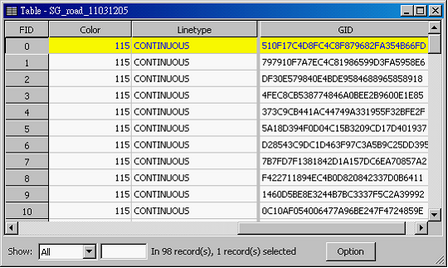SuperGIS Server Online Editing Update
The last step to SuperGIS Server online editing workflow is to update Feature Service. Updating Feature Service is to synchronize the data in client end and server end. In the process of synchronizing data, a mechanism for feature comparison in SuperGIS Server is a must, so that all data could be synchronized correctly. In the scene of multi-user online editing, it takes the unique identifier field to identify each feature of the service by comparing data in client end and server end to make online editing runs. As a Feature Service is published, each feature contained will be added with a GID field, Globally Unique Identifier, so that when front-end users are to synchronize the Feature Service on server end after online editing is done, SuperGIS Server will synchronize and update the Feature Service on server end through comparing the GID values of features. The GID value is like the ID of each feature contained by the service layer. Through it, server is able to identify every feature as well as the modifications done to it in front-end.
Theoretically, online editing in SuperGIS Desktop or SuperPad both takes to download the editable layers of SuperGIS Server Feature Service to display on the front-end; therefore, users can offline edit features. After the editing is finished or partially completed, users connect to SuperGIS Server to synchronize server end data and update service by then.
Feature Service published by SuperGIS Server supports multi-user online browsing and editing. The services can be obtained through related front-end applications, and with the editing tools, users can add, delete, move, rotate, zoom features as well as edit attribute and geography.
©2017 Supergeo Technologies Inc. |


